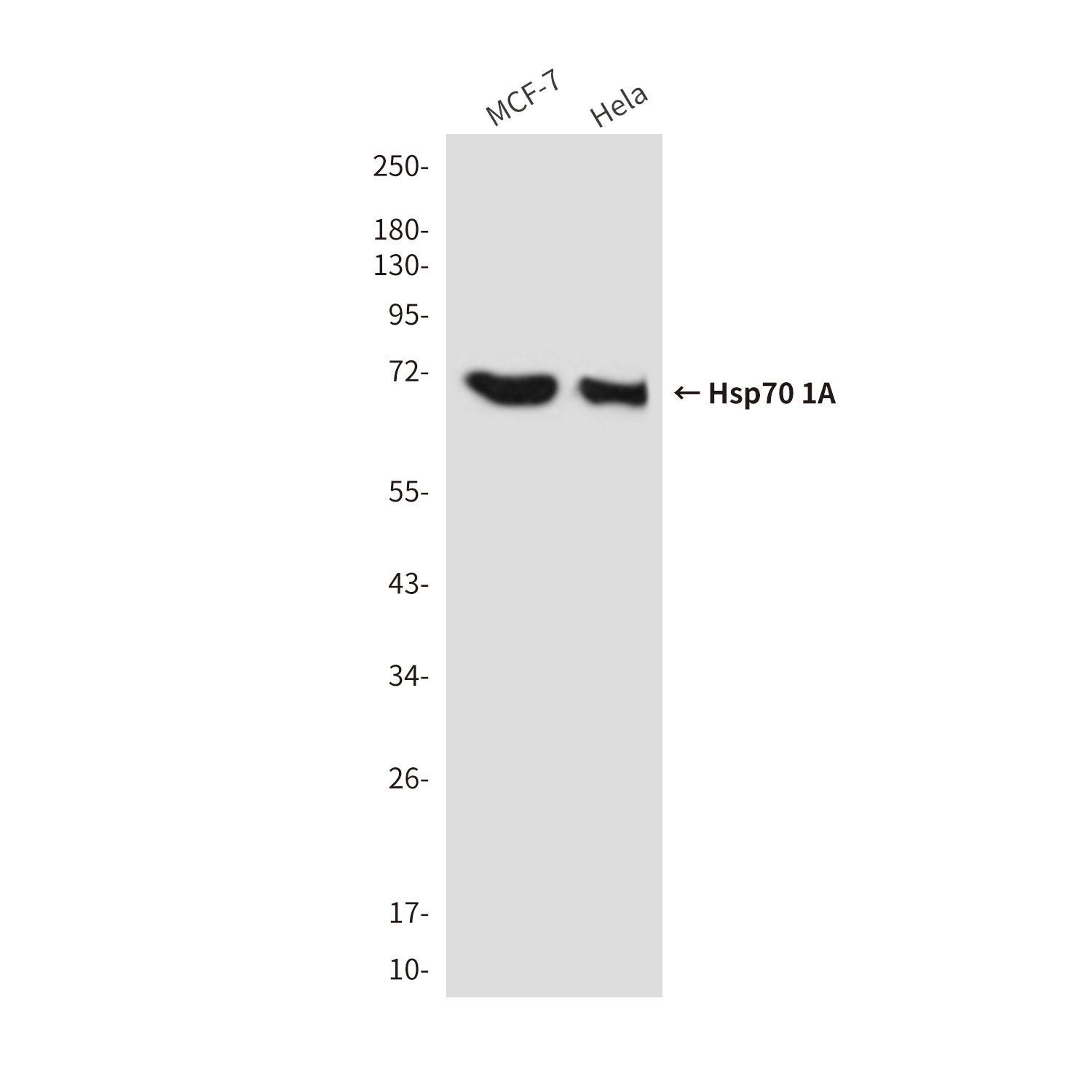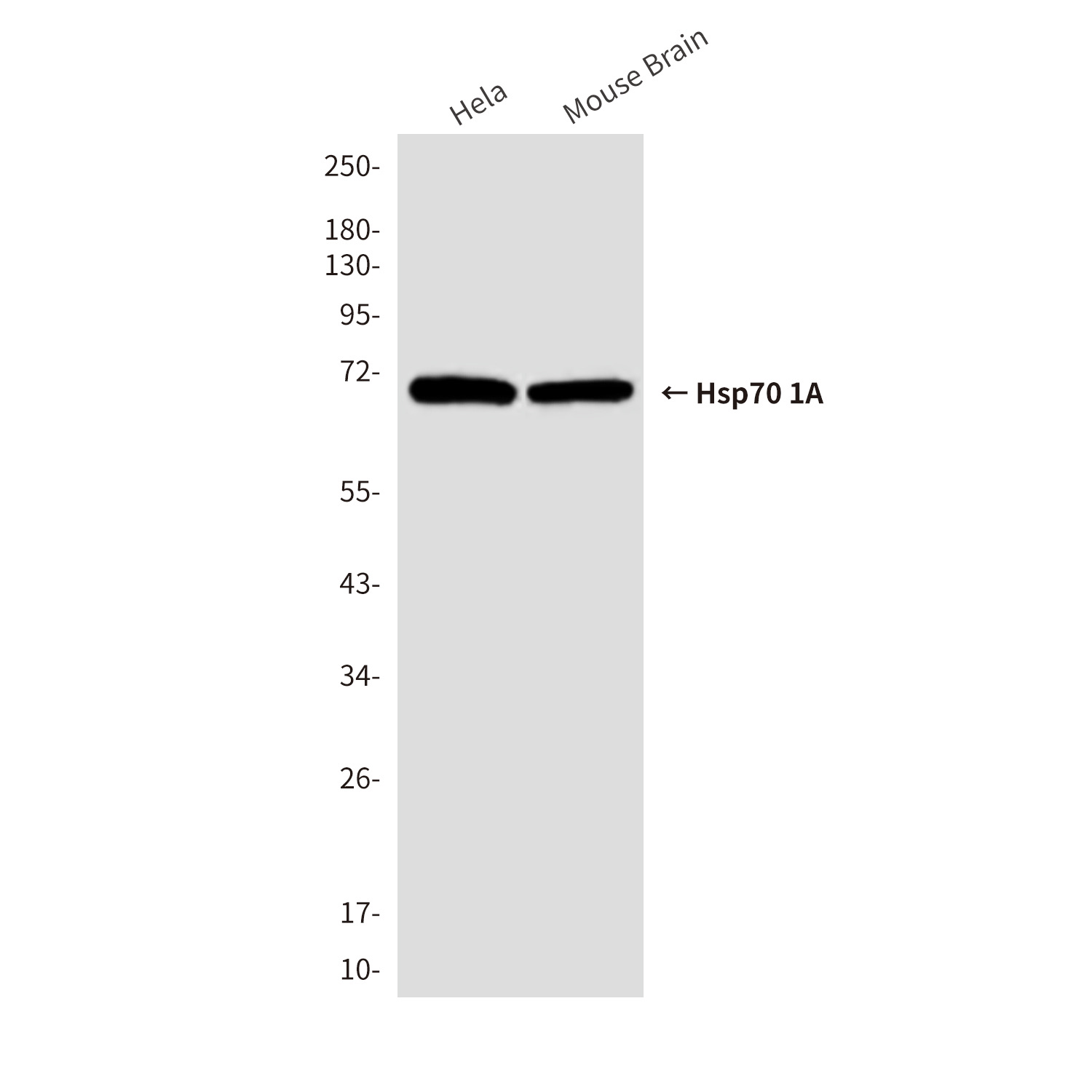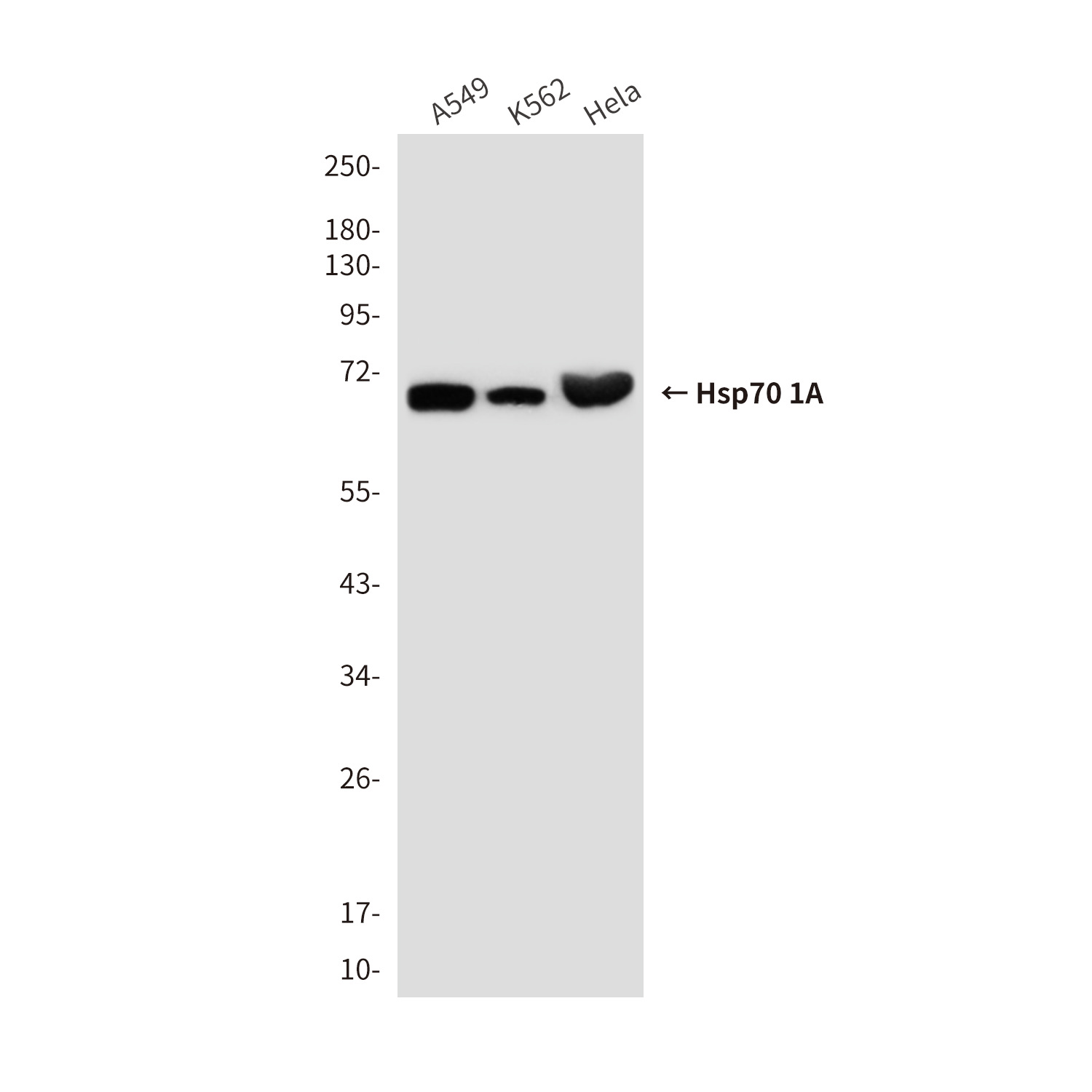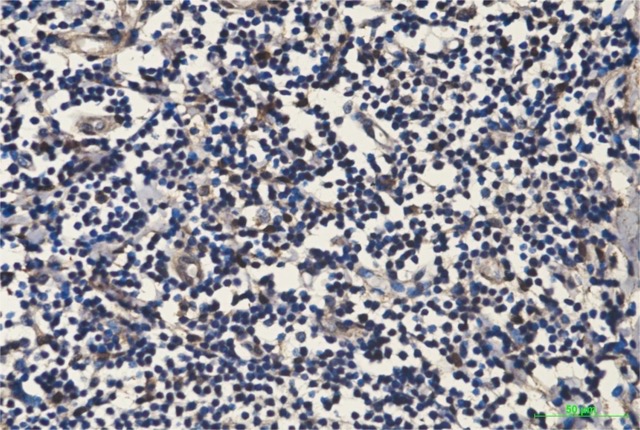您当前的位置:
Hsp70 1A (1D9) Mouse mAb
db6670
Datasheet
Conjugation/Formulation:Un-conjugated
- Background Molecular chaperone implicated in a wide variety of cellular processes, including protection of the proteome from stress, folding and transport of newly synthesized polypeptides, activation of proteolysis of misfolded proteins and the formation and dissociation of protein complexes. Plays a pivotal role in the protein quality control system, ensuring the correct folding of proteins, the re-folding of misfolded proteins and controlling the targeting of proteins for subsequent degradation. This is achieved through cycles of ATP binding, ATP hydrolysis and ADP release, mediated by co-chaperones. The co-chaperones have been shown to not only regulate different steps of the ATPase cycle, but they also have an individual specificity such that one co-chaperone may promote folding of a substrate while another may promote degradation. The affinity for polypeptides is regulated by its nucleotide bound state. In the ATP-bound form, it has a low affinity for substrate proteins. However, upon hydrolysis of the ATP to ADP, it undergoes a conformational change that increases its affinity for substrate proteins. It goes through repeated cycles of ATP hydrolysis and nucleotide exchange, which permits cycles of substrate binding and release. The co-chaperones are of three types/ J-domain co-chaperones such as HSP40s (stimulate ATPase hydrolysis by HSP70), the nucleotide exchange factors (NEF) such as BAG1/2/3 (facilitate conversion of HSP70 from the ADP-bound to the ATP-bound state thereby promoting substrate release), and the TPR domain chaperones such as HOPX and STUB1 (PubMed/24012426, PubMed/26865365, PubMed/24318877). Maintains protein homeostasis during cellular stress through two opposing mechanisms/ protein refolding and degradation. Its acetylation/deacetylation state determines whether it functions in protein refolding or protein degradation by controlling the competitive binding of co-chaperones HOPX and STUB1. During the early stress response, the acetylated form binds to HOPX which assists in chaperone-mediated protein refolding, thereafter, it is deacetylated and binds to ubiquitin ligase STUB1 that promotes ubiquitin-mediated protein degradation (PubMed/27708256). Regulates centrosome integrity during mitosis, and is required for the maintenance of a functional mitotic centrosome that supports the assembly of a bipolar mitotic spindle (PubMed/27137183). Enhances STUB1-mediated SMAD3 ubiquitination and degradation and facilitates STUB1-mediated inhibition of TGF-beta signaling (PubMed/24613385). Essential for STUB1-mediated ubiquitination and degradation of FOXP3 in regulatory T-cells (Treg) during inflammation (PubMed/23973223). Negatively regulates heat shock-induced HSF1 transcriptional activity during the attenuation and recovery phase period of the heat shock response (PubMed/9499401).
- Immunogen Synthetic Peptide of HSP70
-
Gene ID
3303
-
Swiss Prot
P0DMV8
- Synonyms HSP72; HSPA1; HSP70I; HSPA1B; HSP70-1; HSP70-1A
- Reactivity Human, Mouse, Rat
- Application WB, IHC-P, ICC/IF
-
Recommended dilution
WB: 1:500-1:1000
IHC: 1:50-1:100
ICC/IF: 1:50-1:200 - Calculated MW 70 kDa
- Observed MW 70 kDa
- Host species Mouse
- Clonality Monoclonal
- Clonality No. 1D9-4C1-8F9
- Isotype IgG1
- Purity Affinity Purification
- Conjugation Un-conjugated
- Storage/Stability Store at -20°C. Supplied in PBS, 50% Glycerol(pH 7.3), 0.02% sodium azide and 0.5% BSA . Stable for 12 months from date of receipt.
-
 Western blot analysis of Hsp70 in MCF-7 and Hela lysates using Hsp70 antibody.
Western blot analysis of Hsp70 in MCF-7 and Hela lysates using Hsp70 antibody. -
 Immunofluorescence analysis of Hsp70 1A (1D9) in Hela using Hsp70 1A (1D9) antibody(left) ,and DAPI (blue).
Immunofluorescence analysis of Hsp70 1A (1D9) in Hela using Hsp70 1A (1D9) antibody(left) ,and DAPI (blue). -
 Western blot analysis of Hsp70 1A (1D9) in Hela, mouse Brain lysates using Hsp70 1A (1D9) antibody.
Western blot analysis of Hsp70 1A (1D9) in Hela, mouse Brain lysates using Hsp70 1A (1D9) antibody. -
 Western blot analysis of Hsp70 1A (1D9) in A549, K562, Hela lysates using Hsp70 1A (1D9) antibody
Western blot analysis of Hsp70 1A (1D9) in A549, K562, Hela lysates using Hsp70 1A (1D9) antibody -
 Immunohistochemistry analysis of paraffin-embedded Human tonsil tissue using HSP70 (1D9) antibody.High-pressure and temperature Sodium Citrate pH 6.0 was used for antigen retrieval.
Immunohistochemistry analysis of paraffin-embedded Human tonsil tissue using HSP70 (1D9) antibody.High-pressure and temperature Sodium Citrate pH 6.0 was used for antigen retrieval.
订购信息
- Package Price (RMB)
- 50μL 1398
- 100μL 2398
- 货期:现货
相关产品
For research use only. Not intended for diagnostic.
